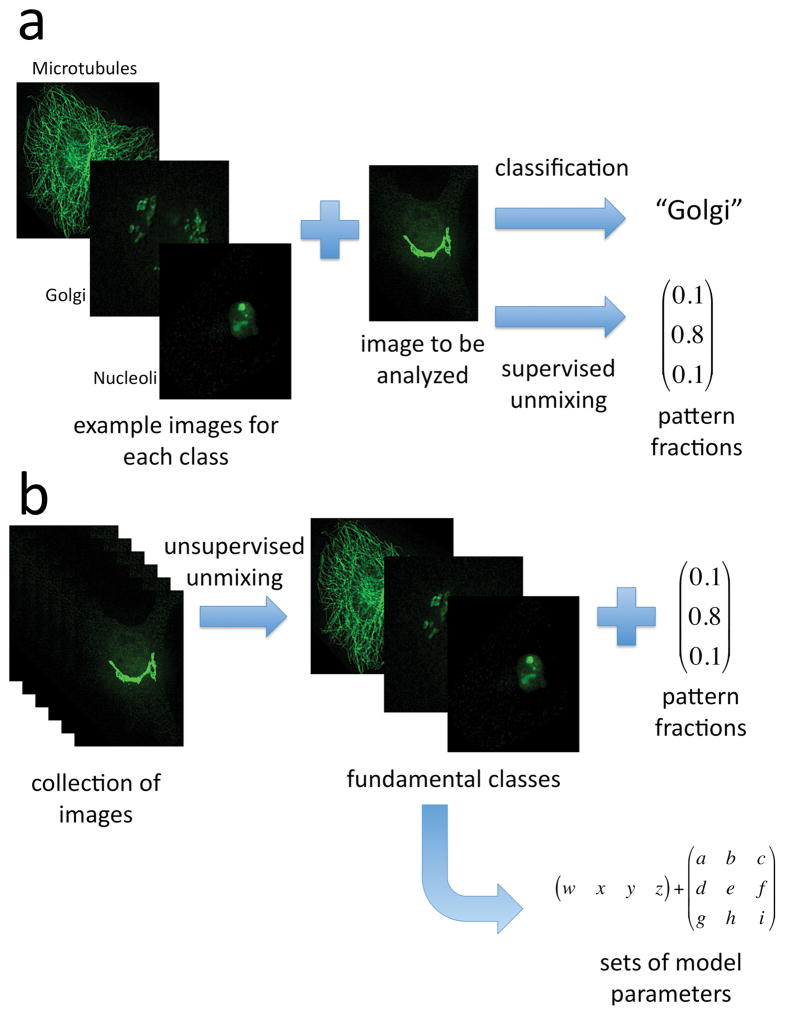Figure 1.
Overview of approaches to communicating subcellular distributions. A) When examples are available of each of the patterns expected to be present, supervised approaches can be used. The top path shows a traditional classification approach: the example images are used to train a classifier and then the image to be analyzed is assigned to one of the classes. The lower path illustrates representing the image by a vector showing the fraction of each of the classes it contains. B) When a large collection is available, unsupervised unmixing can find the fundamental patterns that they contain as well as a vector of pattern fractions for each image. Models of each of the fundamental patterns can then be built for each of the fundamental patterns. Synthetic images can be created using the models and vectors (not shown).

